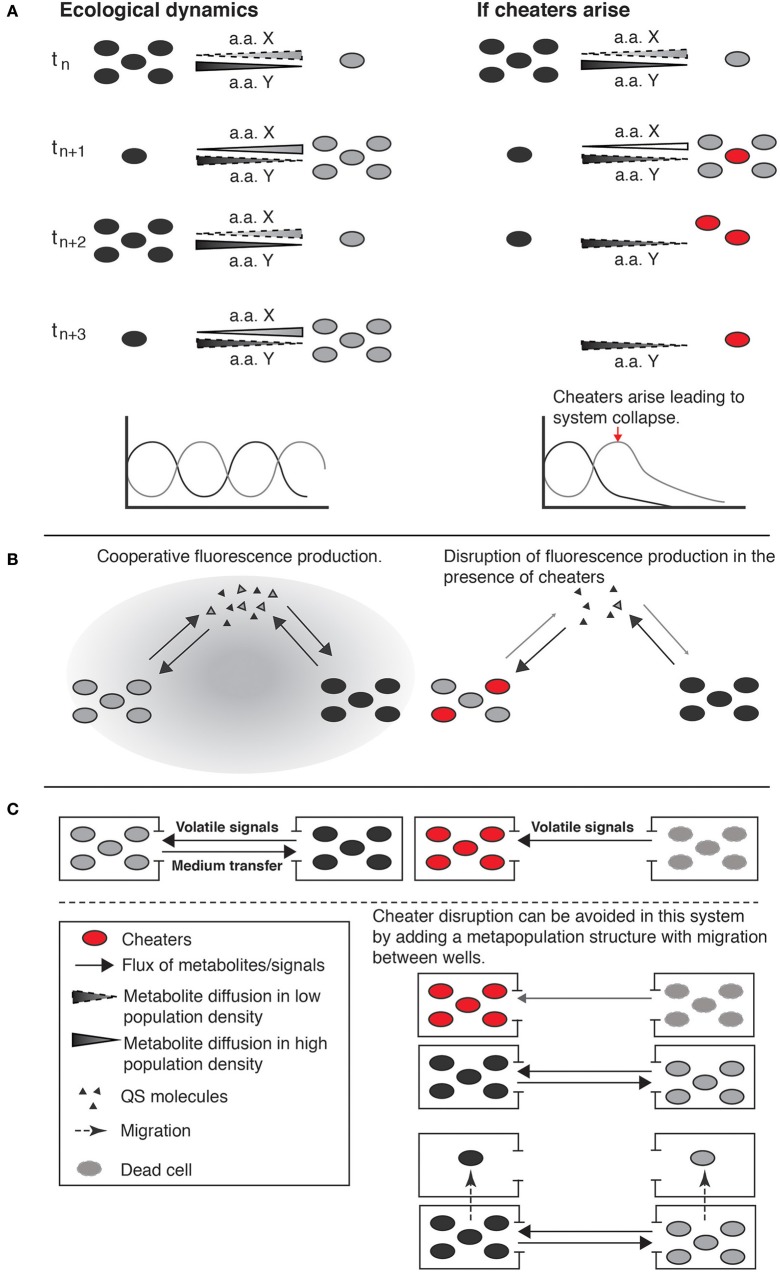Figure 3.
Ecological dynamics and potential evolutionary outcomes of engineered cooperative consortia. In the left column are stable short-term dynamics; the right column, illustrates long-term outcomes if cheaters arose by mutation. (A) Two populations with strict interdependence by the production of essential aminoacids (one strain produces the aminoacid that the other cannot and vice versa). The release of the specific metabolic product is associated with near cell death of the producer and the decline of population density, producing population oscillatory dynamics. Over longer periods of time, cheaters can appear in the population, obtaining the benefits without paying the associated costs, and in the absence of spatial structure cheaters can spread leading to the collapse of the system (example from Shou et al., 2007). (B) A microbial consortium produces fluorescence as a cooperative trait regulated by a mechanism of consensus quorum sensing (QS). The signal molecules of this QS mechanism act as positive feedback between the two populations of cells for the production of both fluorescence and more signal molecules. The ecological role of each population is not described but cheaters can arise and disrupt the system, impeding fluorescence production (example from Brenner et al., 2007). (C) Reciprocal interaction circuit where two populations of cells are maintained in culture. One of the populations provides essential components to the other through volatile signals or direct transfer of medium, this system is thus open to the evolution of cheaters and collapse of the system. System collapse could potentially be prevented by including a redundancy component and local extinction and migration (metapopulation structure) via the replacement of populations in which cheaters appear with populations in which cheaters are absent (example from Weber et al., 2007).

